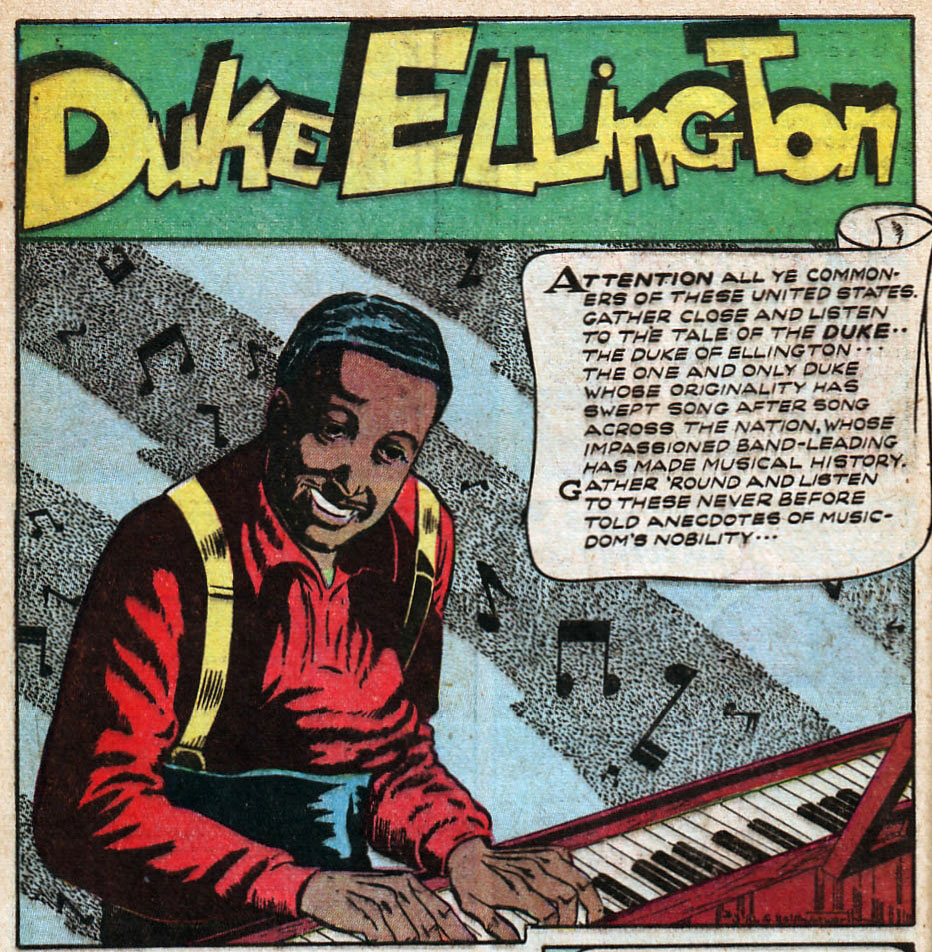 Comic tribute to composer/bandleader Duke Ellington by Alvin Hollingsworth
Comic tribute to composer/bandleader Duke Ellington by Alvin HollingsworthOver the summer of 2020, in the wake of global protests demanding social justice following the death of George Floyd, I began writing an essay about artist Alvin Hollingsworth (1928–2000) for the forthcoming book collection “Desegregating Comics,” edited by Qiana Whitted, a professor of English and African American Studies at the University of South Carolina.
When I was asked to contribute to this new project in 2019, few could have predicted the global impact that the Black Lives Matter movement would soon have. The need to study Black creators has always been of pressing concern to media studies scholars, and Hollingsworth’s contributions to the comic book industry form a vital area for research.
Hollingsworth was a major artist of the Golden Age of comics of the 1930s through 1950s whose work remains mostly unknown to date. He worked in comics in the 1940s and 1950s before going on to become a painter and educator. His career was especially notable for the shift he made from making comic books to using art for civic engagement.
In 1963, Hollingsworth was part of the art collective Spiral, one of the first groups of Black artists in the United States to attract wide attention since the Harlem Renaissance movement of the 1920s. By the 1970s, he was teaching art as a professor at the City University of New York. In moving from drawing horror, crime and jungle comics, as well as love stories targeted specifically to Black readers in the 1950 series “Negro Romance,” to creating paintings with political intent, Hollingsworth’s career is a vital example of how the comics medium can serve as a training ground for an artist seeking to do more than just entertain. Indeed, many of Hollingsworth’s later stylistic traits as an avant-garde painter can be traced back to his early work in comics.
 Associate Professor Blair Davis
Associate Professor Blair DavisHollingsworth’s art notably anticipates that of popular artists in later eras of comic book production such as Jae Lee, Mike Mignola and Tim Sale, all of whom eschew traditional approaches to their figures in favor of a more distorted style. Hollingsworth managed to weave his interests in avant-garde art into many of his comic book assignments (especially horror tales). His comics artwork served as an important precursor to both his own fine arts career and many of the stylistic trends made popular by modern artists, proving that an interest in distorted figures, heavy shadows, scratchy lines and uneven textures is not a recent development in the comics medium.
Several of the stories Hollingsworth drew about witch doctors and jungle tribes were full of racist tropes concocted by their white writers. Later in his career, he was able to reclaim how he drew Black bodies by updating his use of figurative expressionist techniques within the new artistic media of his paintings, sketches and multimedia projects. His work provides a rare example of a Black comics artist who was able to evolve his style toward more overtly sociopolitical ends for new audiences.
Blair Davis is an associate professor of media and cinema studies in the College of Communication at DePaul University.
Originally published in
Conversations (Spring 2021).